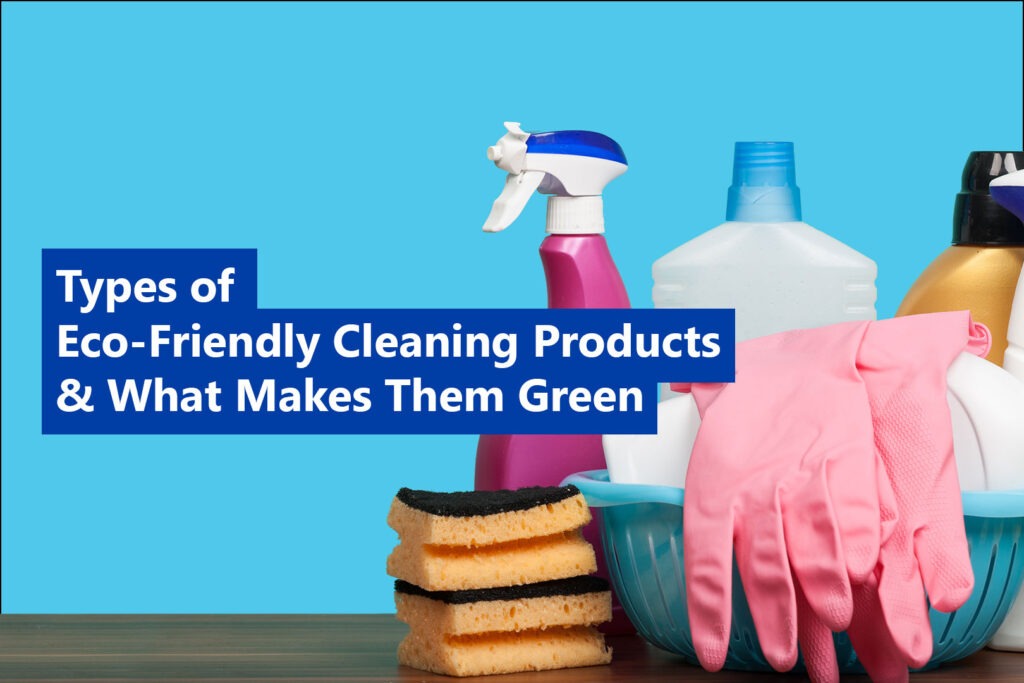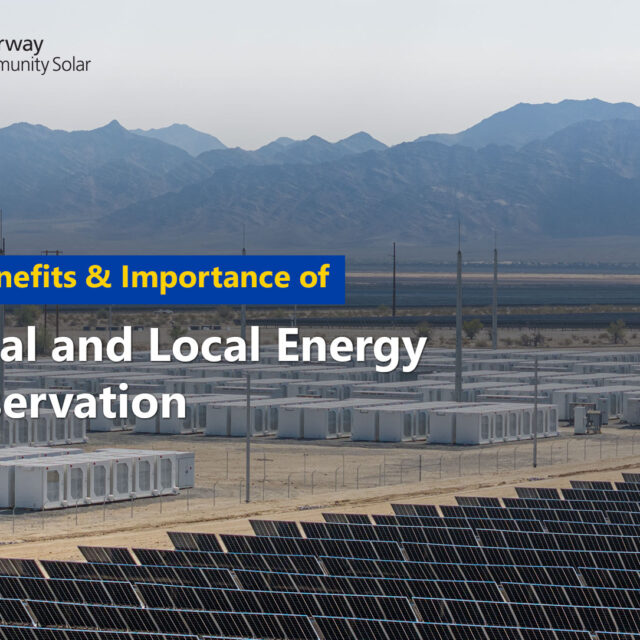
We’ve come a long way over the last decade with the amount of “green” and “eco-friendly” cleaning products that are available for consumers. But it hasn’t always been so straightforward. As it became apparent that more people were willing to pay for sustainable products, there was a sudden increase in companies making misleading sustainability claims about their products — this is known as greenwashing.
Spotting False Claims: How to Recognize Greenwashing
Greenwashing is a marketing practice that involves putting misleading information or visuals on a product in order to make customers believe it is environmentally friendly when, in fact, it has no sustainability benefits. Here are a few examples:
- Adding pictures of nature or Earth on a label.
- Promoting products for their recyclability when, in reality, the type of plastic used is actually very difficult to recycle and often ends up in a landfill.
- Using buzzwords such as “natural,” “eco-friendly,” or “zero-waste” without providing any information about the company’s sustainability practices.
In the case of cleaning products, the examples mentioned above aim to make consumers feel like they are purchasing sustainable and natural cleaning products when they actually are not. The ingredients used can still be harmful to human health and the environment, or the company could have a massive carbon footprint that does more damage to the environment than the eco-friendly ingredients inside can make up for.
It can be tough to navigate this market and avoid greenwashing, but below is a simple guide to help you make more informed decisions about the cleaning products you buy. We’ll help you ensure your dollars are going to companies committed to sustainability and that the cleaning supplies are indeed Earth-friendly.
Understanding Eco-Friendly Cleaning Products
Cleaning products often come into contact with our skin and commonly get washed down drains. Cleaning solutions such as multi-surface cleaners, disinfectants, floor cleaners, dishwasher detergents, and laundry detergents that are truly eco-friendly will contain ingredients that are safer for human health and the environment.
How to Know a Cleaner is Actually Eco-Friendly
To appeal to consumers, many products out there may advertise that they meet some of the “eco-friendly” criteria, such as containing no phthalates, per- and polyfluoroalkyl substances (PFAS), and volatile organic compounds. However, the list of existing chemicals in products that have either undergone or are currently undergoing EPA risk evaluation under the Toxic Substances Control Act is very long.
What the EPA Considers Eco-Friendly
According to the Environmental Protection Agency (EPA), truly eco-friendly products will generally:
- Have a minimal amount of potentially harmful or harsh chemicals, including:
- Corrosive or strongly irritating substances
- Known or likely human carcinogens or reproductive toxicants
- Ozone-depleting compounds listed in Clean Air Act regulations
- Regulated hazardous materials
- Chemicals designated on EPA’s list of hazardous air pollutants
- Use renewable resources (e.g. bio-based solvents)
- Have biodegradable formulas
- Have low toxicity in aquatic species such as fish and invertebrates
- Have a pH that is close to neutral (between 4 and 9.5)
- Be fragrance-free, unscented, or contain EPA Safer Choice fragrances
Ecolabels
Another great way to ensure that any products you’re purchasing to clean your home are environmentally safe is to rely on ecolabels. These labels ensure a product really is designed to be safe for the environment to some degree. Here are a few labels to look for:
- Safer Choice Program: This EPA program certifies products that contain safer ingredients for human health and the environment.
- Design for the Environment: This EPA label identifies antimicrobial products, such as disinfectants and sanitizers, that use alternative active ingredients, such as citric acid or lactic acid.
- BioPreferred® program: This USDA program is a voluntary labeling initiative for products that have a minimum of 25% bio-based content.
- Leaping Bunny Certified: This label identifies products that have not been tested on animals and are considered cruelty-free.
Why Eco-Friendly Products Are a Better Choice
Carbon Footprint
One major reason why you should choose eco-friendly cleaners is because the companies that specialize in eco-friendly products have smaller carbon footprints. Companies that participate in carbon offset projects and strive to be more carbon neutral may have information about the voluntary projects they participate in on their website. Make sure their commitment statement is detailed and preferably links to more information on the offset project they claim to participate in.
Examples of verifiable and top-performing carbon offset programs and projects that companies can participate in include:
- Verified Carbon Standard
- Gold Standard
- American Carbon Registry
- Verra
- Native Energy
- 3Degrees
- Nori
H4: Packaging
Every day, more and more single-use plastic ends up in our landfills and our oceans. These plastics stay in the environment for up to 500 years and rather than decomposing, they just break down into smaller and smaller pieces, eventually forming microplastics, which get ingested by animals and even humans. A company that is truly committed to being plastic-free will have packaging that is biodegradable or compostable. Other good options are containers that are reusable or cleaning brands that offer free recycling or reuse programs through third-party companies such as TerraCycle.
Types of Cleaning Products You Should Avoid
Before we dive into the products that are best to use, let’s first clear the air on the common household cleaners you should avoid (and why):
- Bleach: This chemical solution is highly reactive and has a major negative impact on wildlife, soil, and water quality.
- Products With Phosphates: Often found in laundry detergent, phosphates make their way into bodies of water, leading to eutrophication and harmful algal blooms.
- Wet Wipes: Whether they’re glass cleaner wipes, disinfectant wipes, or simple multi-purpose cleaner wipes, wet wipes contain microplastics. Those plastics often make their way into our oceans, negatively impacting marine life.
- Microbeads: Some abrasive cleaners contain microbeads in order to create a scouring effect. However, those microbeads are harmful to marine life when they are introduced to bodies of water.
Types of Green Cleaning Products You Should Use
Choosing the right cleaning sprays, hand soaps, bathroom cleaners, and more can still be a lot of information to sift through. To further simplify things, below is a list of some of the best eco-friendly cleaning products and cleaning brands that meet the standards and criteria discussed in this article:
Surface-Cleaning Agents
- Seventh Generation All Purpose Cleaner (EPA Safer Choice; USDA BioPreferred; Leaping Bunny)
- Boulder Clean All Purpose Cleaner (EPA Safer Choice; Leaping Bunny)
- Blueland Multi-Surface Cleaner (EPA Safer Choice)
Floor Cleaners
- Seventh Generation Concentrated Floor Cleaner (EPA Safer Choice; USDA BioPreferred; Leaping Bunny)
- Bona Floor Care Products (EPA Safer Choice)
- Auto-Chlor Green Kleen No-Rinse Floor Cleaner (EPA Safer Choice)
Dish Soaps
- Presto! Bio-Based Dish Liquid (EPA Safer Choice; USDA BioPreferred)
- Boulder Clean Liquid Dish Soap (EPA Safer Choice)
Laundry Detergents
- Presto! Bio-Based Fragrance Free Laundry Detergent (EPA Safer Choice; USDA BioPreferred)
- ECOS Laundry Detergents (EPA Safer Choice; plastic-free options)
- EarthBreeze Laundry Detergent Eco Sheets (plastic-free; OECD 301B biodegradable; carbon offsets)
Tub/Tile/Bathroom Sanitizers
- Grove Tub and Tile Cleaner (EPA Safer Choice; plastic-free; Leaping Bunny)
- Blueland Tub and Tile Cleaner (EPA Safer Choice)
DIY Starter Set: Natural Household Products You Can Use
Whether you’re cleaning a countertop or putting together a DIY toilet bowl cleaner, here are some basic products you can use to make natural cleaning solutions.
- White vinegar
- Baking soda
- Reusable spray bottles
- Citrus fruit
- Hydrogen peroxide
- Essential oils (for scent)
- A reusable cloth (less waste than paper towels)
How Eco-Friendly Cleaning Products Help the Environment
The more people who opt to use green cleaning products in their homes and businesses, the better off we all are. Eco-friendly cleaning products make people less likely to be exposed to toxic chemicals, improve indoor air quality, and cause less harm to natural ecosystems, wildlife, and waterways.
If you’re interested in learning more on this subject, our conscious cleaning how-to article has a lot of other great tips (including DIY solutions you can use) for cleaning your home in an environmentally friendly way.









